| |
|
|
|
|
|
|
|
|
|
|
| |
| |
 |
|
| |
田润德
编译文/图 2020-05-25
20:36 |
|
| |
|
|
|
|
| |
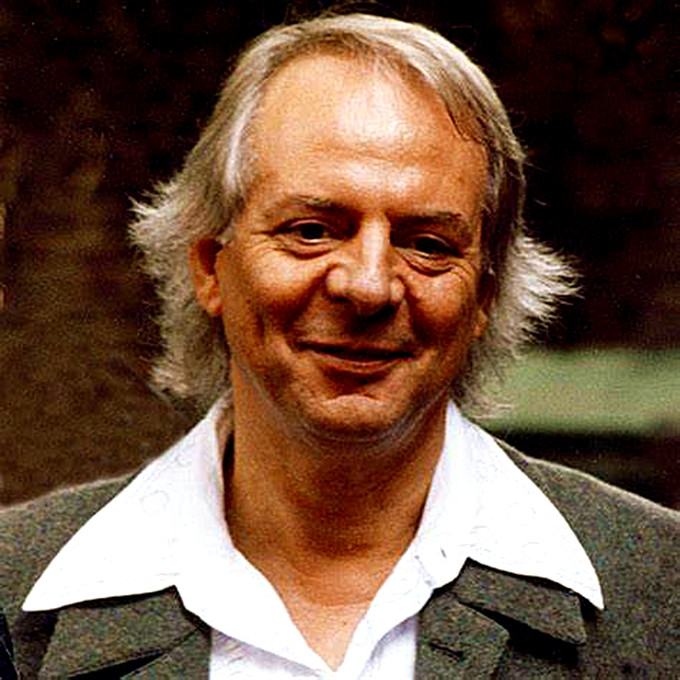 |
|
|
|
| |
卡尔海因茨·施托克豪森(karlheinz
Stockhausen1928—2007) |
|
|
|
| |
|
|
|
|
| |
巴黎音乐学院三支管弦乐队演奏施托克豪森
管弦乐作品
|
|
|
|
| |
karlheinz stockhausen gruppen ensemble intercontemporain
|
|
|
|
| |
巴黎音乐学院三支管弦乐队的管弦乐队Mitthias
Pintscher, Paul
Fitzsimon指挥,
Bruno Mantovani指挥,
Mitthias Pintscher指挥 |
|
|
|
| |
|
|
|
|
| |
音乐历史上的今天
1965年5月25日,“泽纳基斯的音乐令施托克豪森听上去像一位老大师。”(《纽约先驱论坛报》这样的评价在巴黎举行的第一届泽纳基斯音乐节)
1984年5月25施托克豪森的系列歌剧《光》(Licbt)中的第二部《星期六》(Samstag)在米兰上演。
卡尔海因茨·施托克豪森(karlheinz
stockhausen1928—2007)1928年生于科隆附近的默德拉特,父亲是乡村教师。5岁开始学钢琴、小提琴和双簧管。1945年在家乡务农,1947-1951年在科隆高等音乐学校学钢琴和理论,1952年就读于科隆大学。1950年随弗兰克·马丁学作曲,并自己开始对勋伯格、巴托克和韦伯恩进行分析研究。1951年写了用钢琴、双簧管、低音单簧管和打击乐演奏的《十字形游戏》。他有一些作品很为广大的听众欣赏,诸如《少年之歌》、《音准》等。此外,他还出版有多卷本的理论著作。
施托克豪森不仅仅是一位广受争议的20世纪作曲家,而且对整个战后严肃音乐创作领域有着巨大的影响。
施托克豪森出生于德国科隆附近,父亲是一位教师,母亲则是业余钢琴手与歌手。1945年,他14、5岁时,施托克豪森的世界观与艺术观深受他对纳粹独裁统治和文化意识形态破坏的经历的影响。
1949—50年冬,施托克豪森的学业已经达到能够分析并理解诸如欣德米特、斯特拉文斯基这样的
现代音乐大师作品的程度,但当他发现勋伯格的时候,正赶上科隆音乐学校中的反调性思潮他转入弗兰克·马丁的作曲班上学习时,他才受到鼓励,这种鼓励使他完成了关于巴托克的一篇论文。这个突破为他打开通向1951年达姆施塔特夏季进修班的道路,在那里,他遇见青年作曲家卡雷尔·古耶维尔兹。当时,古耶维尔兹正着迷于梅西昂刚刚推出的理论,这种理论把音乐解释成理性的过程,把作品中的所有组成部分,如音符(高音、高强、音色、持续时间这些部分)分开构筑;并不像以前的形式那样,让它们服从于一个主旨,而是重新以一种方式将它们结合在一起,甚至用数学的方法。
60年代,施托克豪森开始着迷于阐释结构与过程,并非确切的成品的细节,他的作品中固定的东西越来越少。过程的魔力和灵感的火花在《自七天》(1968)中可以找到,这部作品通常由施托克豪森与他的演奏团(于1964年为演出《麦克风I》而组建)亲身演绎。这部作品只有一些标明变化方向与总体结构的记号,音乐的细节全都留给了演奏者。施托克豪森于60年代热情从事的另一项工作是世界各地的音乐的新的融合,最后的结晶是《颂歌》(1968),一部长达两个小时的融合了具体音乐风格的电子音乐作品,其具体音乐的部分主要包括来自世界各个角落的国歌。这部作品立刻引起了争议,人们认为施托克豪森并没有“创作”这部作品,但对于施托克豪森而言,这本身才是最重要的。他认为将这些不相关的要素和过程结合起来将是他的新创作的主要方向和智性的信仰。他的作品《音准》(由6个人声在一个静态的和弦上演唱不同的音素序列)探索了组合人声模式和音质的色彩与性质。这部作品在一些音乐会上遭到无情的嘲弄,听众甚至模仿猫叫以宣泄对施托克豪森的偏见。
今日视频:1、巴黎音乐学院三支管弦乐队演奏施托克豪森
管弦乐作品;2、
帕特里夏和加贝塔演奏泽纳基斯的小提琴和大提琴的二重奏。 ——莫扎特之旅 |
|
|
|
| |
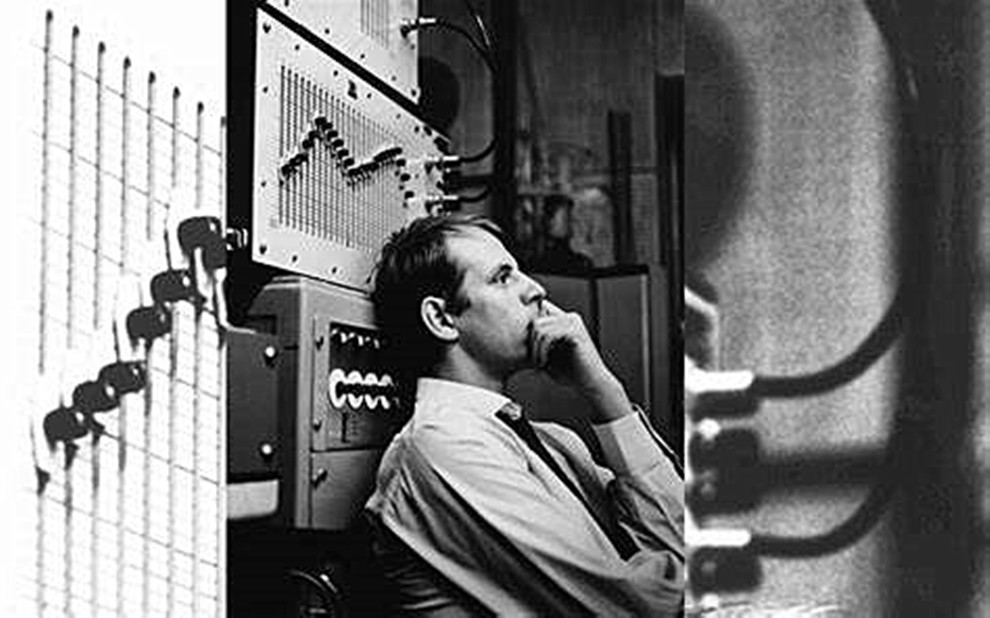 |
|
| |
卡尔海因茨·施托克豪森(karlheinz
Stockhausen) |
|
|
|
| |
Today in
the history of music
May 25, 1965, "zenakis' music makes stockhausen sound like an
old master."(the New York herald Tribune on the first zenakis
festival in Paris)
On May 25, 1984, the second part of stockhausen's opera series
"Licbt", "Saturday" (Samstag), was performed in milan.
Karlheinz stockhausen1928 -- 2007 karlheinz stockhausen1928
(karlheinz stockhausen1928 -- 2007) was born in murratt, near
cologne, 1928, the son of a village teacher.He began to learn
piano, violin and oboe at the age of five.He worked as a farmer
in his hometown in 1945, studied piano and theory at the cologne
conservatory of music from 1947 to 1951, and studied at the
university of cologne in 1952.He studied composition with frank
Martin in 1950 and began his own analysis of schoenberg, bartok,
and webern.In 1951 he wrote the cross game for piano, oboe, bass
clarinet, and percussion.Some of his works are appreciated by a
wide audience, such as "song of the youth" and "intonation".In
addition, he published several volumes of theoretical works.
Stockhausen was not only a controversial composer of the 20th
century, but also had a huge influence on the whole field of
serious post-war music writing.
Stockhausen was born near cologne, Germany, the son of a teacher
and an amateur pianist and singer.In 1945, when he was 14 or 5
years old, stockhausen's worldview and artistic outlook were
deeply influenced by his experience of the Nazi dictatorship and
the destruction of cultural ideology.
By the winter of 1949-50, stockhausen's studies had reached the
point where he could analyze and understand the likes of
hindemeter and stravinsky
The extent of the work of the great masters of modern music, but
he was encouraged when he discovered schoenberg, just in time
for the anti-tonality of the cologne school of music, when he
transferred to the composition class of frank Martin, and this
encouragement led him to complete an essay on bartok.The
breakthrough opened the way to a summer workshop in darmstadt in
1951, where he met the young composer karel guevelvelz.At the
time, guevelvelz was fascinated by the theory that messi had
just introduced, which interpreted music as a rational process
that constructed all the components of the work, such as the
notes (high pitch, high intensity, timbre, duration)
separately;Instead of subjecting them to a theme, as they used
to be, they were brought together in a new way, even
mathematically.
In the 1960s, stockhausen became fascinated by the
interpretation of structure and process, not the exact details
of the finished product, and there were fewer and fewer fixed
things in his work.The magic of the process and the spark of
inspiration can be found in "seven days from now" (1968), often
performed by stockhausen and his ensemble (formed in 1964 for
the performance of "microphone I").This work has only some marks
indicating the direction of change and the overall structure,
and all the details of the music are left to the
performer.Another of stockhausen's passions in the 1960s was the
new fusion of music from all over the world, culminating in
"ode" (1968), a two-hour electronic musical composition that
incorporated a specific musical style, including the national
anthem from all over the world.The work immediately caused
controversy. People thought that stockhausen did not "write" the
work, but for stockhausen, that in itself was the most important
thing.He believed that the combination of these unrelated
elements and processes would be the main direction of his new
creation and his intellectual belief.His work intonation (in
which six voices sing different sequences of phonemes on a
static chord) explores the color and nature of combined vocal
patterns and timbre.The work was mercilessly mocked at some
concerts, with listeners even mimicking meows to vent their
prejudice against stockhausen.
1. Three orchestras from the Paris conservatory of music play
stockhausen's orchestral works;2. Patricia and gabetta play
zenakis's duet for violin and cello.-- a trip to Mozart
|
|
|
|
| |
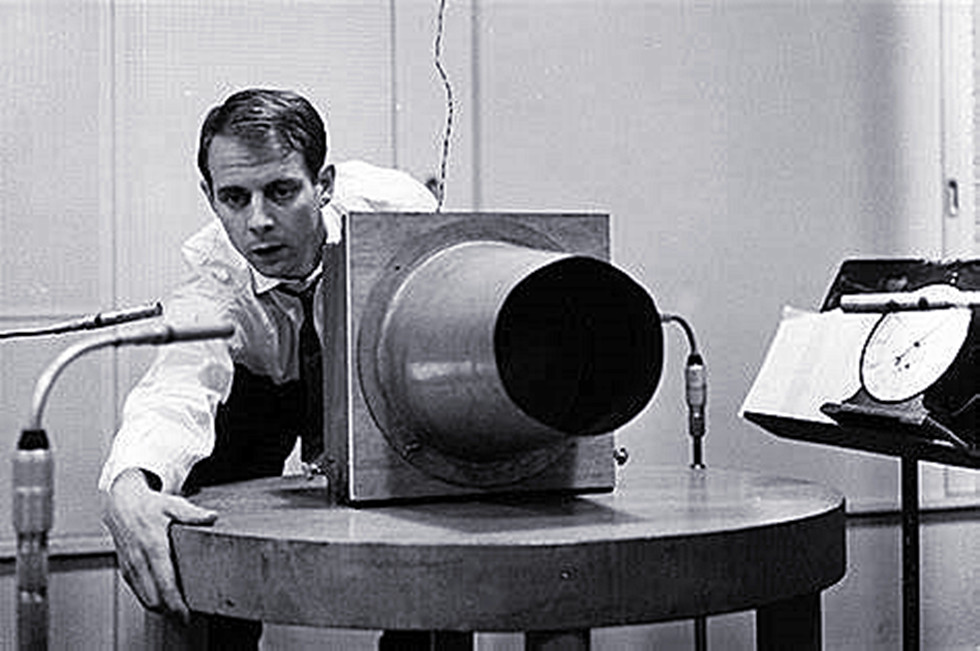 |
|
| |
卡尔海因茨·施托克豪森(karlheinz
Stockhausen) |
|
|
|
| |
我们或许可以在电子及计算机辅助音乐里找到新的音色和作曲方式最主要的来源。新技术不仅提供了创造新声音的方法,而且近一段时期以来,在乐器音色的合成方面也不断取得新成就。这个领域的音乐先锋是皮埃尔·合费尔(生于l9lO年)。他在巴黎的工作室里始创出“具体音乐”。这种电子音乐的早期形式是使用预先录制的乐音,通过改变录音的重放方向和速度等各种基本方式来合成的。舍费尔最著名的作品是他的《铁路练习曲》(1948年),根据录制的列车奔驰的声音而作。埃德加·瓦雷兹也成功地将电子音乐应用到了器乐再奏《沙漠》(
1954年)中,并用电子音乐创作了《电子音诗》(1 958年)
电子音乐后来也将成为整体序列音乐运动所要表现的确定性趋势的最根本的表达方式。卡尔海因兹·施托克豪森拜访了舍费尔的工作室,但他发现“具体音乐”的创作方法尚不够精致,不符合他的创作目的。如果序列主义能够确定一首乐曲中的每一参数,那么下一步则是构建与该哺的结构原则一致的音色本身。施托克豪森在他的的家乡科隆找到了一个合适的工作室。在这里,他创作了数部作品,值得一提的是他的电子音乐练习曲《麦克风I》和《麦克风Ⅱ》(1953年)以及《少年之歌》(1956年),其中也用到了“具体”乐音。特别是《少年之歌》,它是一首极为出色的磁带音乐,高音独唱与合成音响的织体完全融合在一起。l960年创作的《接触》有电声版和电声、打击乐与钢琴版两种。而布莱兹在80年代也将精力投入到巴黎的一个先进的电子音乐实验室,在那儿,他创作的第一部作品是《应答圣歌》。
计算机的发展极人地提高了非器乐音乐的创作及创作技能。计算机不光能够处理在音乐会中的现场音效——即所谓的“实时”音乐,还能生成乐曲的素材。
20世纪70年代末,音乐合成与研究学院在巴黎成立,并成为电子音乐、计算机生成音乐和声音分析、合威等方面的重要研究中心。借助于该学院令人叹服的技术,特里斯坦·穆菜尔(生于1947年)和卡吉亚·萨里亚诺(生于1952年)等作曲家得以将乐曲结构与复杂的声音结构联系在一起,从而生成一种“谱式音乐”。 |
|
|
|
| |
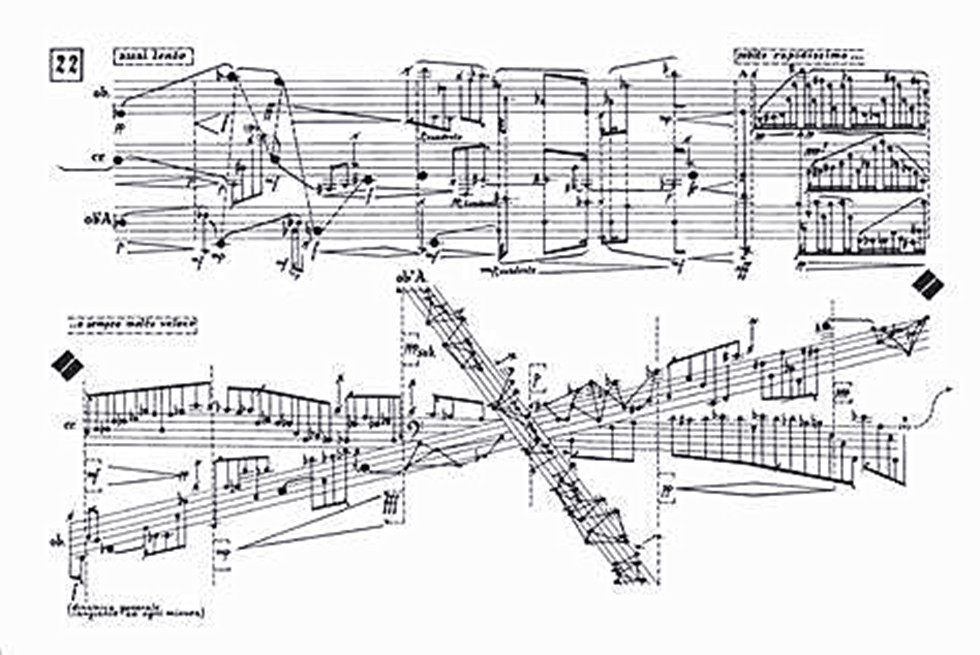 |
|
| |
卡尔海因茨·施托克豪森(karlheinz
Stockhausen)
电子音乐的乐谱 |
|
|
|
| |
The score of
karlheinz Stockhausen's electronic music |
|
|
|
| |
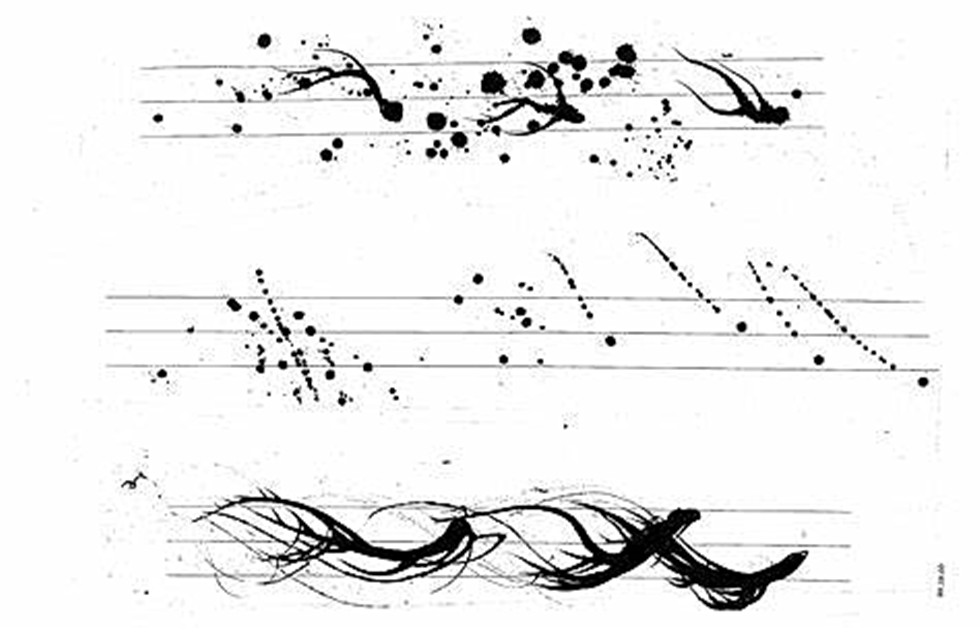 |
|
| |
卡尔海因茨·施托克豪森(karlheinz
Stockhausen)
电子音乐的乐谱 |
|
|
|
| |
The score of
karlheinz Stockhausen's electronic music |
|
| |
Perhaps the most
important source of new timbre and composition can be found in
electronic and computer-aided music.New technology not only provides a
way to create new sounds, but also makes new achievements in the
synthesis of Musical Instruments' timbre.The music pioneer in this field
was Pierre hoefer (born in l9lO).He started making "concrete music" in
his studio in Paris.This early form of electronic music used
pre-recorded sounds, synthesized by varying the playback direction and
speed of the recording in a variety of basic ways.Schaefer is best known
for his "railway etudes" (1948), based on the recorded sound of a train
running.Edgar Varese also successfully applied electronic music to the
instrumental replaying of desert (1954) and used electronic music to
create electronic poetry (1958).
Electronic music will also become the most fundamental expression of the
deterministic trend that the overall sequential music movement is
intended to represent.Carl heinz stockhausen visited schaefer's studio,
but found that the "concrete music" approach was not refined enough for
his purposes.If sequentialism can determine every parameter in a piece
of music, the next step is to construct the timbre itself consistent
with the structural principles of the feed.Stockhausen found a suitable
studio in his hometown of cologne.Here, he wrote several works, it is
worth mentioning his electronic music etudes "microphone I" and
"microphone Ⅱ" (1953) and "song of youth" (1956), which also use the
"specific" music.In particular, "the song of the young" is an excellent
cassette music, with a high-pitched solo and a synthetic-sound
texture.L960, the creation of "contact" and electroacoustic version and
electroacoustic, percussion and piano version of two.Blaise also devoted
his energies in the 1980s to an advanced electronic-music laboratory in
Paris, where he wrote his first work, "the hymn of the answer."
The development of computers has greatly improved the creation and
skills of non-instrumental music.Computers can process not only the
sound effects of live music at a concert -- so-called "live" music --
but also produce material for the music.
In the late 1970s, the school of music synthesis and research was
founded in Paris and became an important research center for electronic
music, computer-generated music and sound analysis, and hewei.Thanks to
the school's impressive technology, composers such as Tristan mullel
(born 1947) and katja sariano (born 1952) were able to combine musical
structure with complex sound structures to produce a "spectral music". |
|
|
|
| |
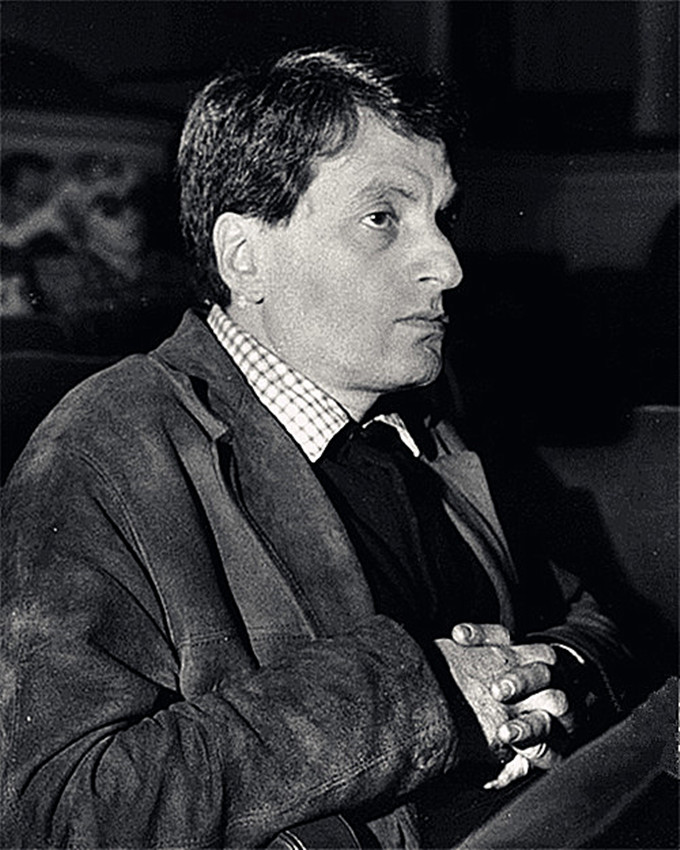 |
|
|
|
| |
伊安尼斯·泽纳基斯(Iannis Xenakis) |
|
|
|
| |
伊安尼斯·泽纳基斯
法籍希腊现当代作曲家,建筑师。又译克赛纳基斯,出生于罗马尼亚。父亲是一个商人不过爱好音乐,小时候给予泽纳基斯音乐启蒙教育。5岁时泽纳基斯父亲去世,这给他带来了极大的悲痛。1932年在学校合唱团唱歌,接触到了莫扎特以及帕莱斯特里纳的作品。1938年考入雅典国家工业大学,主修建筑学和工程学,不过同时也学习音乐理论。学业因为二战而中断,泽纳基斯应征入伍,参加了希腊抵抗运动以及后来的希腊内战,不幸被英军坦克的榴弹炮击中。虽然奇迹般地幸存了下来,可是面部负伤毁容,一只眼睛失明。1947年由于希腊国内逮捕内战左翼分子而移居巴黎,师从众多著名作曲家,尤其是梅西安。又作为建筑师与勒·柯布西耶合作,参与了1958年布鲁塞尔世博会的场馆设计工作。泽纳基斯曾咨询梅西安自己是否需要重新学习和声以及对位,梅西安回应说:“你还学什么理论呢?你太与众不同,已经将近30岁,是一个希腊人,一名建筑师,智商远高于常人,数学功底远优于常人,发挥你的这些特长吧!”这给泽纳基斯指明了方向。1953年的作品“转化”标志着其独特风格的形成。1950年代后他逐渐建立起了声誉,之后在多所大学任教。2001年在巴黎去世。泽纳基斯现在主要以先锋派作曲家知名,他的音乐创作受到偶然音乐和电子音乐等现代音乐理念影响,但大部分作品仍由传统乐器演出。他创作的特点是把各种数学概念和理论引入音乐,但在音乐表达上也注重与希腊文化传统的联系。 |
|
|
|
| |
 |
|
| |
伊安尼斯·泽纳基斯(Iannis Xenakis) |
|
|
|
| |
Iannis zenakis
French Greek modern and contemporary composer and architect.Xenakis was
born in Romania.His father, a businessman but a lover of music, gave
zenakis an early musical education.Zenakis was five when his father
died, which brought him great grief.In 1932, he sang in the school choir
and was exposed to the works of Mozart and Palestrina.He entered the
national technical university of Athens in 1938, majoring in
architecture and engineering, but also studying music theory.Interrupted
by the second world war, zenakis was drafted into the Greek resistance
and later the Greek civil war, where he was hit by a gun-howitzer fired
by a British tank.Miraculously, he survived, disfigured in the face and
blind in one eye.He moved to Paris in 1947, following the arrest of
civil war leftists in Greece, and studied with many famous composers,
especially messian.As an architect, he collaborated with le corbusier in
the design of the pavilion for the 1958 Brussels world expo.When zenakis
asked messien if he needed to relearn harmony and counterpoint, messien
replied, "what other theory are you studying?You are a Greek, an
architect, far above average in intelligence, far above average in
mathematics. Use them!"That points the way for zenakis.The 1953 work
"transformation" marked the formation of its unique style.He gradually
built his reputation after the 1950s and later taught at several
universities.He died in Paris in 2001.Zenakis is now known primarily as
an avant-garde composer whose compositions were influenced by modern
musical ideas such as accidental music and electronic music, but most of
his compositions are still performed on traditional instruments.His
works are characterized by the introduction of various mathematical
concepts and theories into music, but he also pays attention to the
connection between the musical expression and the Greek cultural
tradition.
|
|
|
|
| |
|
|
|
|
| |
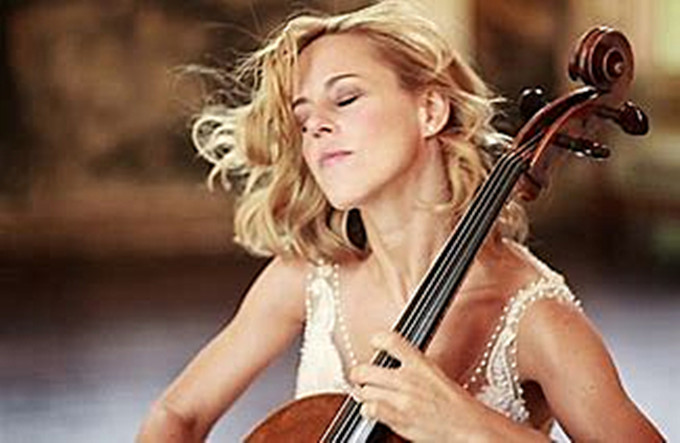 |
|
|
|
| |
修儿·嘉碧妲(Sol Gabetta) |
|
|
|
| |
Sol Gabetta
修儿·嘉碧妲这位金发美人来自阿根廷、拥有法国和俄国血统的大提琴家嘉碧妲是位笑容非常亲切、不喜欢以严肃面貌示人,目前,她在巴赛尔音乐院(BaselAcademy
of
Music)担任教职。人如其名,有著阳光笑容与坦率个性的大提琴家修儿.嘉碧妲,是新生代最璀璨的古典巨星。出道十年,她在全世界各大音乐厅与多个知名乐团合作演出,每场演出都获得观众狂热的喝采。 |
|
|
|
| |
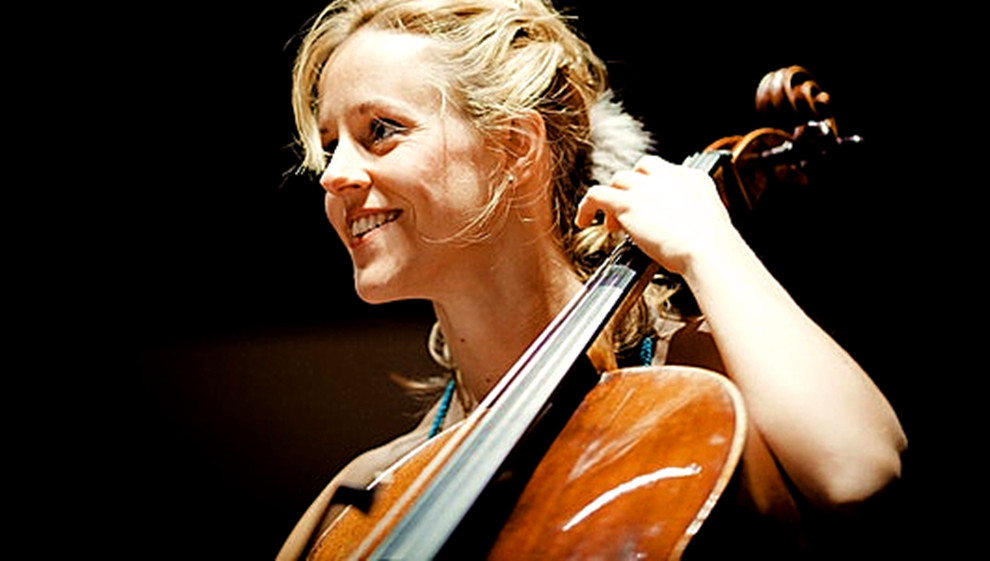 |
|
| |
Sol Gabetta,
a blonde Argentine cellist of French and Russian descent who has
a very friendly smile and doesn't like to appear serious,
teaches at the BaselAcademy of Music.True to his name, Hugh the
cellist had a sunny smile and an open personality.Gabita is the
brightest classical superstar of the new generation.She has
performed with many famous orchestras in concert halls around
the world for ten years, and every performance has been met with
enthusiastic applause from the audience. |
|
|
|
| |
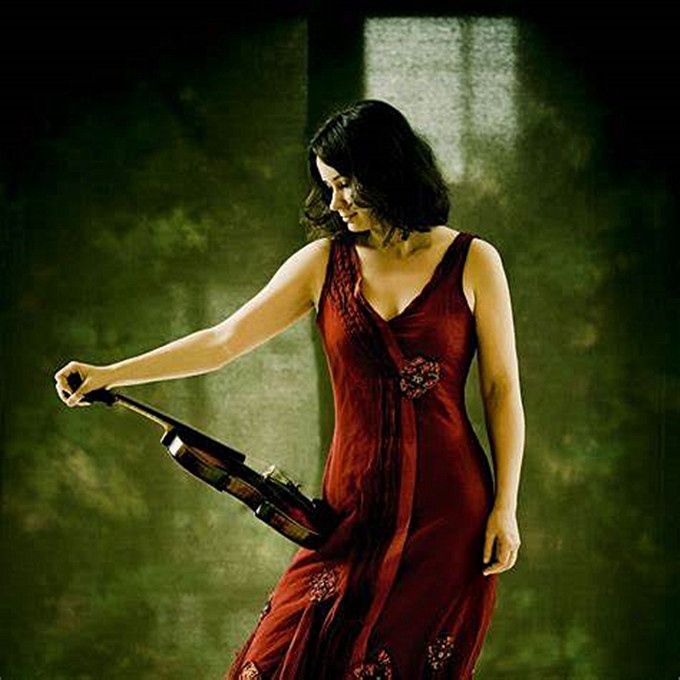 |
|
|
|
| |
帕特里夏·科帕金斯卡亚 |
|
|
|
| |
帕特里夏·科帕奇斯卡娅以创新演绎而为欧洲音乐界所赏识,她的演奏有很强烈的个人特色。
帕特里夏·科帕奇斯卡娅1977年出生于摩尔多瓦
(Moldova,一个1991年脱离苏联独立的小国)。她来自一个音乐世家,母亲艾米利亚-罗马涅区也是小提琴家,她跟随家庭在1989年移居维也纳。先后在维也纳和伯尔尼学习音乐,21岁时她成为维也纳大学音乐学院研究员,2000年以优异的成绩毕业。
Patricia专精现代作品,截至目前,已首演超过50首以上的现代小提琴作品,其中多首还是她自己的作品。她2000年获得墨西哥亨里克-谢林小提琴比赛的头奖。2002年嬴得国际瑞士信贷青年艺术家荣誉奖。2002/2003年度代表奥利地在新星音乐会系列中,于纽约和各欧州首都城市中作首演。其后,她获得欧洲广播联盟EBU在2004年颁发的SPP新星奖,及在2006年颁发德国的无线电奖(Forderpreis
Deutschlandfunk)。2011年, 帕特里夏荣获布里恩茨小提琴制造学校协会颁发的金琴弓(Golden Bow)奖。
帕特里夏演奏用的是一把瓜奈利小提琴,由奥地利国家银行租借给她使用的。
|
|
|
|
| |
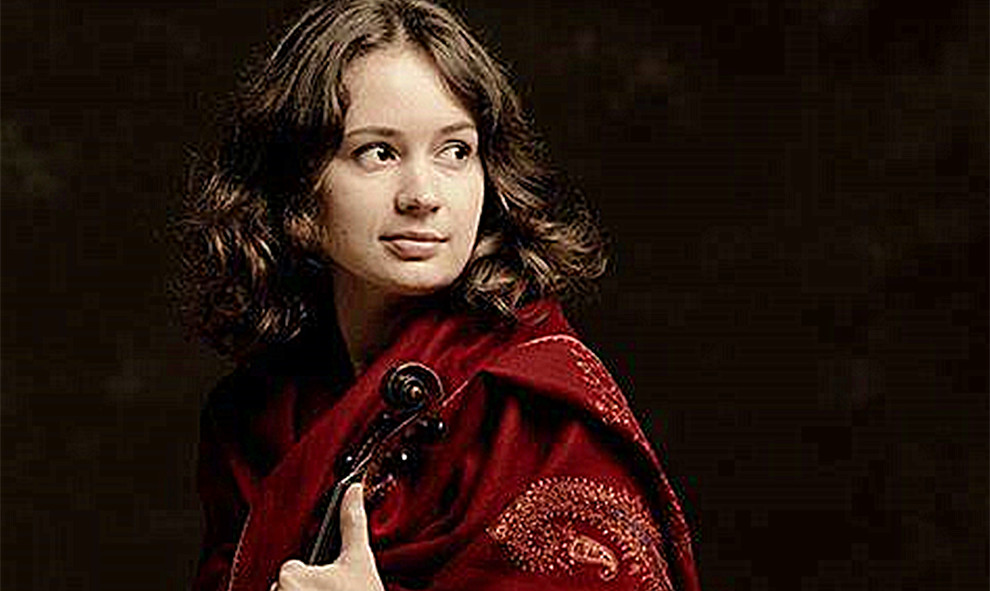 |
|
| |
Patricia
copakinskaya
Patricia kopaczskaya is appreciated by the European music
industry for her innovative interpretation. Her performance has
a strong personal character.
Patricia kopaczskaya was born in 1977 in Moldova, a small
country that broke away from the Soviet union in 1991.She came
from a musical family, and her mother, emilia romagna, was also
a violinist. She moved with the family to Vienna in 1989.After
studying music in Vienna and Bern, she became a research fellow
at the conservatory of music at the university of Vienna at the
age of 21 and graduated with honors in 2000.
Patricia specializes in modern works. So far, she has premiered
more than 50 modern violin works, many of which are her own.She
won the first prize in the henrik schelling violin competition
in Mexico in 2000.She won the credit suisse international young
artist award in 2002.2002/2003 representative oliver made his
debut in the rising star concert series in New York and European
capitals.She was subsequently awarded the SPP nova award by the
EBU in 2004 and the Forderpreis Deutschlandfunk in Germany in
2006.In 2011, Patricia received the Golden Bow award from the
association of breentz violin making schools.
Patricia played with a guarneri violin, which was rented to her
by the Austrian national bank.
|
|
|
|
| |
|
|
|
|
| |
【泽纳基斯】【Xenakis】小提琴和大提琴的二重奏
|
|
|
|
| |
Duo, for violin
and cello
|
|
|
|
| |
伊安尼斯·泽纳基斯
Iannis Xenakis:
小提琴和大提琴的二重奏
Duo, for violin and cello
大提琴
索尔·加贝塔
Sol Gabetta, cello
小提琴
帕特里夏·科帕金斯卡亚
Patricia Kopatchinskaja, violin
|
|
|
|
| |
|
|
|
|
| |
未得原作者编者授权严禁转载www.mt77.com任何内容 |
|
|
|
|
|
|
|
|
|
|
|
|
|
|


